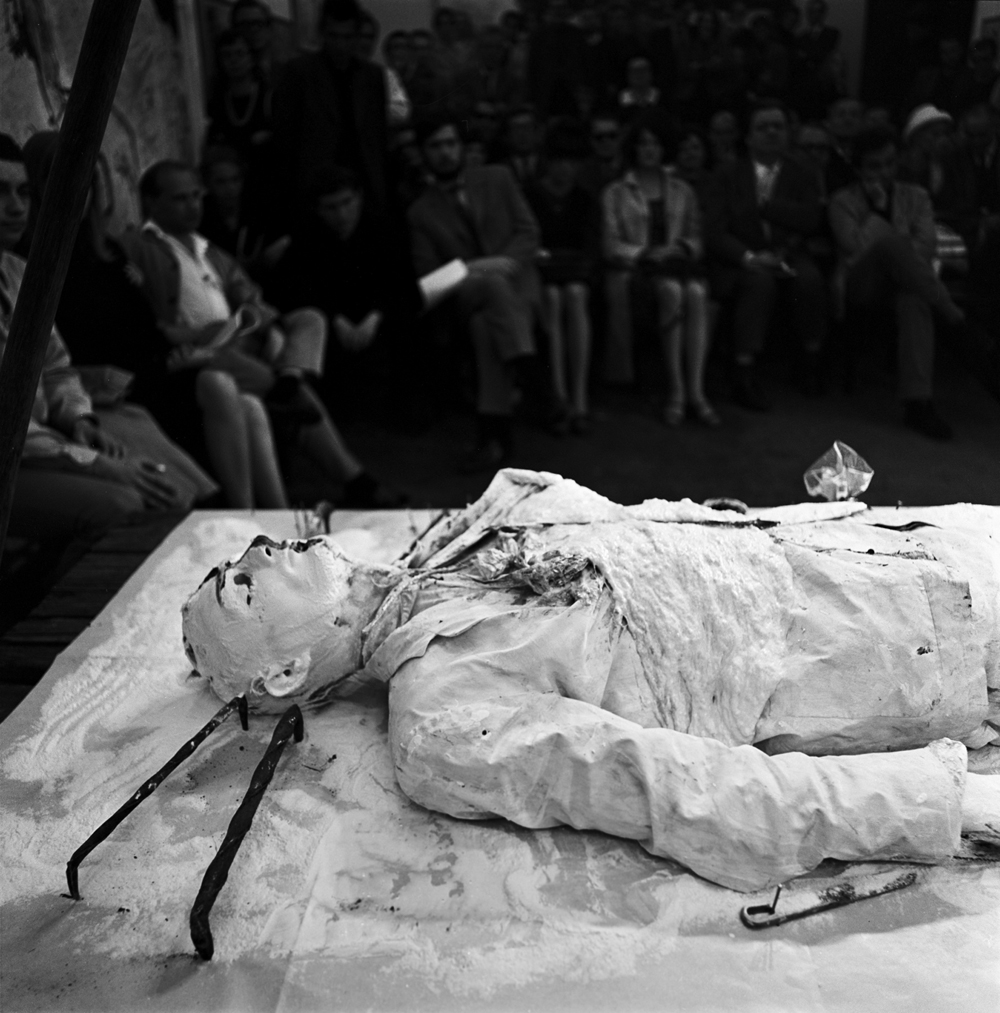Body, Psyche and Taboo
mumok, Vienna, Austria
mumok, Vienna, Austria

In ‘Body, Psyche and Taboo: Vienna Actionism and Early Vienna Modernism’, mumok takes yet another opportunity to display its impressive collection of works of actionism – that violent, transgressive movement from 1960s Vienna. Unlike last year’s exhibition, ‘My Body is the Event’, this one sites the actionists in relation to their predecessors – the pioneers of turn-of- the-century Austrian modernism, such as Gustav Klimt, Oskar Kokoschka and Egon Schiele. The show suggests it is no coincidence that both movements responded to the question of human flesh as a site of suffering or shame in response to their respective political climates: the end of the decadent, complacent Austro-Hungarian empire, and the repressed memory of Nazism in the stagnant conservative culture of postwar Austria.
Each of the museum’s three floors takes up a different theme: the destruction of the body; the raging intensity of human emotion; and intimacy and materiality. The first is the most interesting of the three, containing video footage of some of the most notorious – and disturbing – examples of actionism. Grim actionist outrages are juxtaposed with the modernists’ frenzied, contorted forms, successfully drawing out resonances between the two movements. Here, we also see how early modernists like Schiele pictured the human body mainly in nude self-portraiture – suggesting that society and the body mutually deform each other – while the actionists, on the other hand, documented the destruction of the body or its displacement, as in Hermann Nitsch’s swapping of the human for animal entrails.

In Self-Mutilation (1965) and Stress Test (1970), Günter Brus doesn’t so much analyze the limits of his own embodiment as turn it into a spectacle. The former sees him coat himself in white clay, prising open and hacking apart his own ‘second’ flesh. We watch aghast as blood seeps over this tattered, dehumanized figure. In the latter, he writhes on a linoleum surface in his own blood, urine and excrement, yelping and barking. These are genuinely shocking images, with the artist’s degraded flesh acting as an art object and the site of critique. Pain and grief are shown to be politically as well as artistically unruly.

Nitsch’s work downplays critical or political content in favour of an inventive fusion of Christianity and an imaginary version of primeval blood-sacrifice rituals. In his 20th Painting Action, performed at the Secession in 1987, he paints a gigantic surface red with the oozing blood of an animal carcass. The anonymity of the destroyed creature is reflected in the sober horror of Nitsch’s facial expression, occasionally captured in close-up. An example of his Origien Mysterien Theater (Orgiastic Mystery Theatre), performed around the Holy Week of 1998, minimizes only some of this mock seriousness, subverting the traditional Biblical narrative structure with a bizarre playful energy. Its scenes of foot-washing in blood, mock-crucifixion and buckets of blood being poured into a huddle of people standing on a white surface say less about belief or religious fervour than about our own alienation.

Rudolf Schwarzkogler also raises the question of our forsaken creaturely life in his infamous Aktion 2, performed in 1965. Here, he captures castration anxieties on celluloid, with an infamous final image of him posing with a gutted fish covering his groin. ‘Body, Psyche and Taboo’ shows us that the symbolic content of actionist works, and the artists’ protests against their country’s complicity in Nazism, was achieved only by leaving nothing to the imagination. The actionists pushed the transgressive energy of early Viennese modernism to its logical extreme, moving from displaying those bits of ourselves that we hide from the public gaze to actively performing human self-destruction. Ultimately, there is a demand in these horrors that we face up to what they expose, rather than accept the claims that we have become too desensitized to react.























